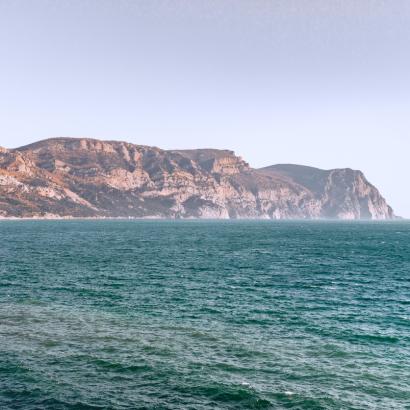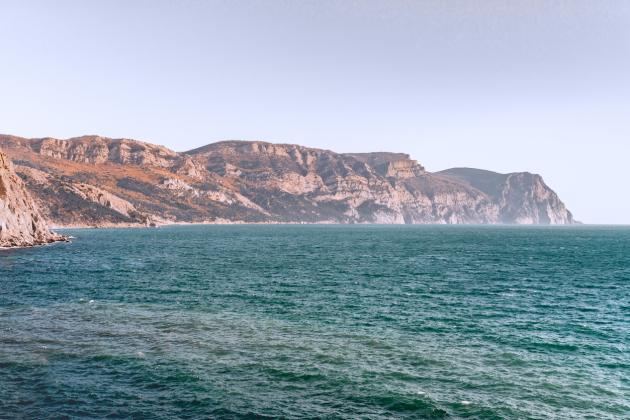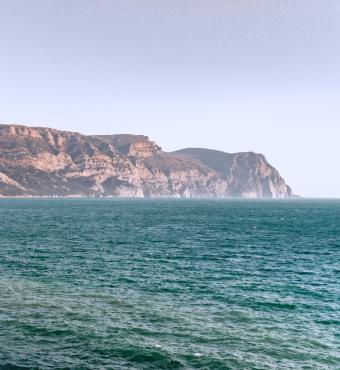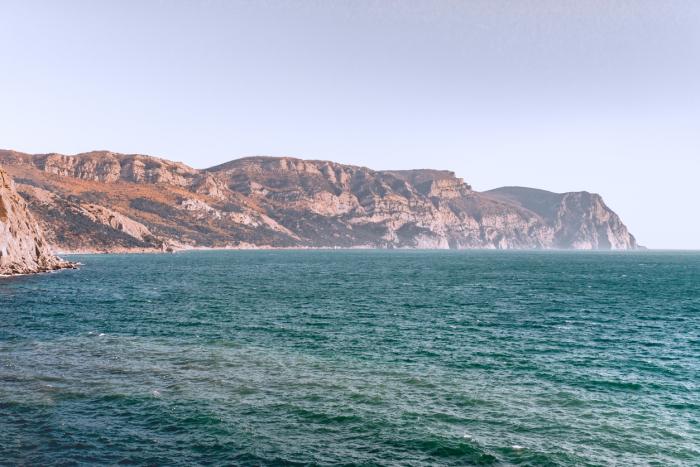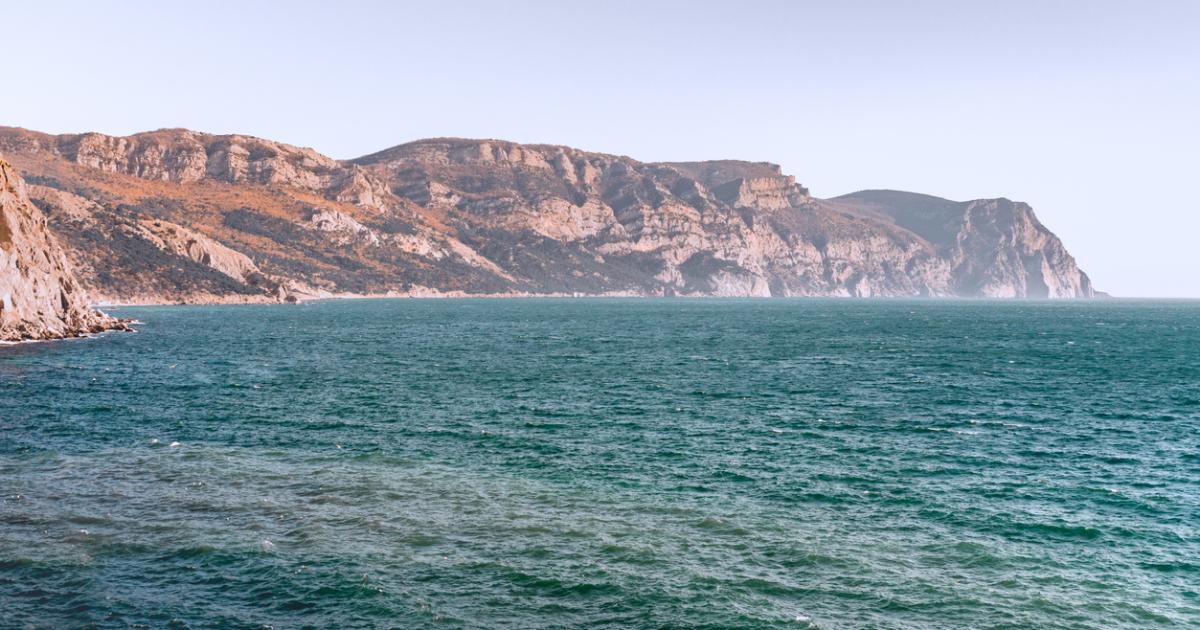Thirty years from now, a historian writing a book on the events of the last two decades happening in the area between Russia and the Middle East, including in Ukraine, might entitle it The Long War for the Black Sea. For in fact, while the military clash between Russia and Ukraine is occurring predominantly on land and the outcome of the war will determine the political and economic survival of an independent Kyiv, the great strategic prize is the Black Sea. To control Ukraine means to dominate the Black Sea and to control the Black Sea means to control the internal sea of Central Europe and the Caucasus.
Nevertheless, military operations on the Black Sea appear like a sideshow of the primary battlefield on the Ukrainian steppes. With the exception of a few events, visually dramatic, and reputationally shocking for Russia, (e.g., the sinking of Russia’s Moskva by two Ukrainian Neptune missiles in April, the Ukrainian retaking of the geographically strategic Snake Island, an attack by unmanned surface vessels on Russian ships in Sevastopol in October), the decisive actions in this current war between Russia and Ukraine are along the Dnieper, in eastern Ukraine, and to some degree over Ukraine’s cities and infrastructure. The Black Sea is not a major theater of operations also because Ukraine has no naval assets and a very limited ability to fly or sail over it.
In fact, the Black Sea seems more of a venue for cooperation than competition. The so-called “grain deal” is the main fruit. A series of parallel agreements, negotiated under the UN but signed in Istanbul, allows Ukraine to export grain while also granting Russia the right to do the same and send to the world markets its own foodstuffs, oil, and fertilizer, blunting Western sanctions.
But this impression that the Black Sea is a secondary theater – or even one that is a source of cooperation – is mistaken. It is not a military battlefield between Russia and Ukraine. It is, however, a geopolitical chessboard where mainly Russia and Turkey vie for control.
On the Black Sea, the United States is not the primary actor. This sea has never been at the center of American attention which has been focused rather on the Atlantic Ocean and the Mediterranean and Baltic seas (and from a global perspective, increasingly drawn to the Pacific). Not surprisingly, the Biden Administration’s National Security Strategy doesn’t mention the Black Sea; neither did the 2017 Trump document. And while over the years some have raised the issue of the Black Sea as pivotal, there is no coherent strategy on how to deal with it. Recently, Senators Romney and Shaheen have passed a bill requiring the Biden administration to develop a Black Sea strategy, the lack of which is seen as an intellectual weakness rather than as a symptom of an objective absence of interest and inability to exercise influence.
This strategic void goes back to the Montreaux Convention of 1936 which imposed limits on the size and length of stay of ships of non-littoral states in the Black Sea. As a result, NATO vessels (except those, like Turkey and Romania, with a coast on the sea) have limited ability to patrol this body of water. No NATO ship traversed these waters before February 2022 and once Turkey closed the straits to non-littoral ships at the beginning of the renewed Russian invasion of Ukraine, there has been no possibility of introducing one there. In brief, the Black Sea is, indeed, a sideshow for the Western alliance and the U.S. in particular.
Yet it is an internal sea in the region and consequently it controls the littoral lands around it. In fact, it is hard to understand the geopolitics of Central Europe, Caucasus, the Mediterranean and the Middle East without looking at the Black Sea.
For Russia, the Black Sea is crucial to access the Mediterranean and to exercise influence over the Danubian region. Unsurprisingly, the foreign policy objective of Russia is – as it has been for centuries – to rule the Black Sea. The Ottoman empire controlled it until the 17th century, when Russian southward expansion challenged and ultimately replaced the domination of the Turks and the Poles. The Russian Black Sea fleet was created in 1783 and since then, with some ups and downs, the sea was essentially a Russian, and then Soviet, sea.
With the collapse of the USSR, Moscow’s dominion over this sea also broke. Ukraine’s independence diminished Russian possession of the northern littoral. NATO’s enlargement to Romania and Bulgaria in 2004 added more Western allies to the Black Sea states. And the rise of Turkey as an assertive middle power, eager to establish its own influence over the region, reintroduced a strategic actor that has been essentially irrelevant since the late 18th century. The loss of the Black Sea was for Moscow a serious geopolitical setback, and it is not surprising that Putin, the aspiring modern Russian tsar seeking the restoration of imperial greatness, has relentlessly engaged in aggression in the region.
In the last 20 years Russia’s actions can be seen as a series of attempts to make the Black Sea her own. Russia’s wars against Georgia (2008), Ukraine (2014), as well as its involvement in Syria are attempts to dominate the Black Sea in addition to being part of a larger, more ambitious strategy to restore Russia’s geopolitical heft. This is Russia’s long Black Sea War.
The importance of the Black Sea lies in its continental nature. As an internal sea, it is a vital artery for the littoral states. For instance, it holds the estuary of the Danube, a meandering European river that goes through Vienna, Bratislava, Budapest, Belgrade, along the border between Bulgaria and Romania, and then heads north toward Moldova and Ukraine. The heart of Europe flows into the Black Sea.
The Black Sea is also a means to control the Caucasus region and, above all, to be a geopolitical actor in the Middle East. A Russia that controls the Black Sea becomes a Middle Eastern power. Moreover, without a firm hold of this sea, Russia cannot easily access the Mediterranean, a sea that was a locus of great power competition during the Cold War. In brief, the Black Sea is to the region from the Mediterranean to the Persian Gulf what Poland is to Western Europe: a necessary gate for Russia.
But to control the Black Sea, Russia needs Ukraine, and in particular Crimea. The main port of Sevastopol has been a key base for the Russian navy. And the sea of Azov, an inland sea leading to an inland sea, controls the access to the Caspian Sea through the Volga-Don canal. Russia’s aggression against Ukraine is thus driven by a geopolitical need more than by some passing whim of Putin. Putin at some point will no longer be the dictator in Moscow but the geopolitical imperative for Russia to control the Black Sea, and Ukraine, will continue to exist and shape Russian foreign policy. This is an old problem for Russia. Even in the late 18th century, it was clear that “as long as the Crimea remained independent, Russia could have no navy in the Black Sea – the Sea of Azov freezes over from November to April and its exit was too shallow for large warships. Russia’s future as a naval power in the Black Sea thus depended on a settlement of the ‘Crimean question.’”[1]
The current iteration of Russia’s southward push may pause at some point simply out of military exhaustion imposed by Ukrainian forces. But the vector of Russian foreign policy will not change. Russia has always pursued a strategy of imperial domination of the region, not to develop commerce as most maritime powers have done in history. Mahan does not shape Russian strategy; Mackinder does.
[1] John P. LeDonne, The Russian Empire and the World, 1700-1917 (New York: Oxford University Press, 1997), p. 106.








